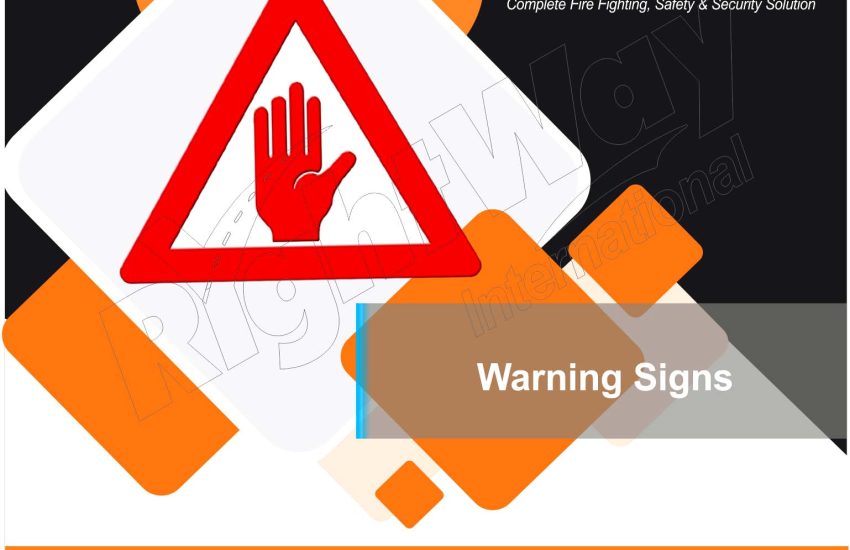Warning Signs are crucial components of public safety and hazard communication. They serve as visual cues to alert individuals about potential dangers, helping to prevent accidents and injuries. This article delves into the importance of warning signs, their types, effective design principles, and best practices for use.
The Role of Warning Signs
Warning signs are designed to provide clear, concise information about potential hazards or unsafe conditions. Their primary roles include:
- Alerting Individuals: Warning signs inform people about dangers they might not immediately notice, such as slippery floors, high voltage areas, or chemical hazards.
- Preventing Accidents: By clearly communicating risks, warning signs help prevent accidents and injuries, ensuring a safer environment in various settings like workplaces, public areas, and private properties.
- Providing Instructions: Many warning signs also offer specific instructions or precautions that individuals should take to avoid harm.
Types of Warning Signs
- Hazard Signs: These signs indicate the presence of specific hazards, such as toxic chemicals, electrical dangers, or flammable materials. Examples include “Danger: High Voltage” or “Caution: Flammable Materials.”
- Safety Signs: Safety signs provide guidance on how to stay safe around certain hazards. They often include symbols and instructions, such as “Wear Protective Gear” or “Keep Area Clean.”
- Prohibition Signs: These signs indicate actions or behaviors that are not allowed, such as “No Smoking” or “Do Not Enter.”
- Emergency Signs: Emergency signs direct people to safety measures or emergency equipment, like “Emergency Exit” or “First Aid Kit Location.”
- Information Signs: While not strictly warning signs, information signs provide additional context or operational instructions, such as “Parking Area” or “Restroom.”
Design Principles
Effective warning signs must be designed with clarity and visibility in mind. Key design principles include:
- Use of Symbols: Universal symbols, such as those developed by the International Organization for Standardization (ISO), help ensure that warning signs are easily understood regardless of language. Symbols should be simple, recognizable, and relevant to the hazard.
- Color Coding: Colors play a significant role in warning signs:
- Red: Indicates danger or prohibition (e.g., “No Entry”).
- Yellow: Alerts to caution or potential hazards (e.g., “Caution: Wet Floor”).
- Green: Used for safety information and emergency exits (e.g., “Emergency Exit”).
- Blue: Communicates mandatory actions (e.g., “Wear Safety Glasses”).
- Clear Text: Text on warning signs should be concise and legible. Use bold, sans-serif fonts for clarity. Ensure the text contrasts with the background color for readability.
- Size and Placement: Signs should be large enough to be visible from a distance and placed in areas where they will be easily noticed, such as at eye level or near potential hazard zones.
- Reflective Materials: In areas with low light conditions, reflective or illuminated signs can improve visibility and effectiveness.
Best Practices for Warning Sign Use
- Regular Updates: Ensure that warning sign are regularly reviewed and updated to reflect any changes in hazards or safety procedures.
- Training: Educate employees and individuals about the meaning of warning sign and how to respond to them. This training is crucial for ensuring that safety messages are understood and acted upon.
- Maintenance: Regularly inspect and maintain warning sign to ensure they remain in good condition and are not obscured or damaged.
- Compliance: Adhere to local and international standards for warning sign, such as those set by OSHA (Occupational Safety and Health Administration) or ISO, to ensure that sign meet legal and safety requirements.
Conclusion
Warning sign are a fundamental aspect of hazard communication and safety management. By effectively alerting individuals to potential dangers, providing clear instructions, and adhering to best design practices, warning sign play a crucial role in preventing accidents and ensuring a safe environment. Regular updates, proper training, and diligent maintenance further enhance their effectiveness, making warning sign a vital component of any comprehensive safety strategy.


